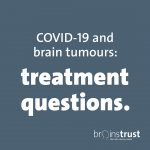
Photo by Lesly Juarez on Unsplash
Ideas for how to have a mindful shower by Lou Henry
How to have a mindful bath or shower
- Put phones on silent or out of earshot into a different room
- Give yourself permission to ‘switch off’ for these 5-10 minutes of your day
- Prepare yourself and the area where you are washing. Make sure you have easy access to all the products you need.
- Once you have started, focus completely on what you are doing using as many senses as you can.
- Pay particular attention to:
- What can you feel?
- What can you smell?
- What can you hear?
- What is the temperature like?
- What does this make you feel?
Continue to ask yourself questions such as ‘is this feeling good?’
- Remind yourself throughout that “at this moment in time everything is good”, because at that moment everything in your focus is
- If other thoughts interrupt, simply let them go and bring your focus back to the present moment.
Take some long deep breaths in and out, relax your shoulders and face muscles.
Think how lucky we are to have this pure, clean water to wash with and say to yourself ‘in this moment in time, everything is good’.
How does the water feel on your skin?
Visualise it washing away your worries, cleansing you from head to toe, inside and out. SMILE.
Say to yourself again ‘in this moment in time, everything is good’.
Look around you, see all the things that you like to make you clean, smell fresh and feel good.
Look at what you are standing on or sitting in and be glad of it and the support.
Have you got a favourite soap or shampoo? Think about why you like it and how it makes you feel.
Think positively about your body. Focus your attention on painful areas and visualise the cleansing of those areas taking the pain away.
Let any negative thoughts go and bring focus to your breathing.
Smell the soap and feel the sensation on your skin.
If you are using a sponge or flannel, how does that feel?
Focus on each part of your body as you slowly wash, from head to toe.
Focus on drying your body in the same way, relaxing each part of you before you leave the bathroom.
How do you feel afterwards, compared to before your shower?
Try using mindful focus, using all of your senses, on other household activities too, such as:
Eating a meal – slowly taste each mouthful and think about the flavours. Say to yourself ‘in this moment in time all is good’.
Washing up- feel of the water, how sparkly are the plates, what are you looking at in front of you? Think of each item and its useful purpose.
About Lou Henry
My name is Lou Henry, and I was diagnosed with an inoperable meningioma brain tumour that is positioned next to the brain stem in 2018. I was also diagnosed with Chronic Fatigue/ME 11 years ago. This forced me into early retirement from a job that I loved. I believe now that I had the undetected tumour then, as the fatigue has continued but I manage it now with balancing rest times and activities.
I always try to find ways of helping myself and have found the daily practice of meditation and mindful techniques positively life changing and very helpful when stressed. Acceptance of debilitating Chronic Fatigue Syndrome then the brain tumour was the hardiest, but it’s a positive thing, to accept. My mantra became ‘I am me, not M.E’ I control it, not the other way round as it used to. Qualifying to become a Meditation and Mindfulness teacher was challenging with fatigue, but I achieved it. It was difficult however to continue teaching as my speech and memory became more affected, but I pass on different techniques to my friends and family when they’re stressed, and practice it daily myself (not EVERY time I take a shower though!).
I wanted to share this mindfulness exercise and other ideas with other brainstrust ‘members’ to help those along times and also to help Jodie at brainstrust who has been my other saving grace coming to terms with the ‘new normal’.
The whole country is now facing a scary ‘new normal’ which has weirdly made me feel even stronger, as my own condition has paled into insignificance, and we are getting through this surreal time together.





